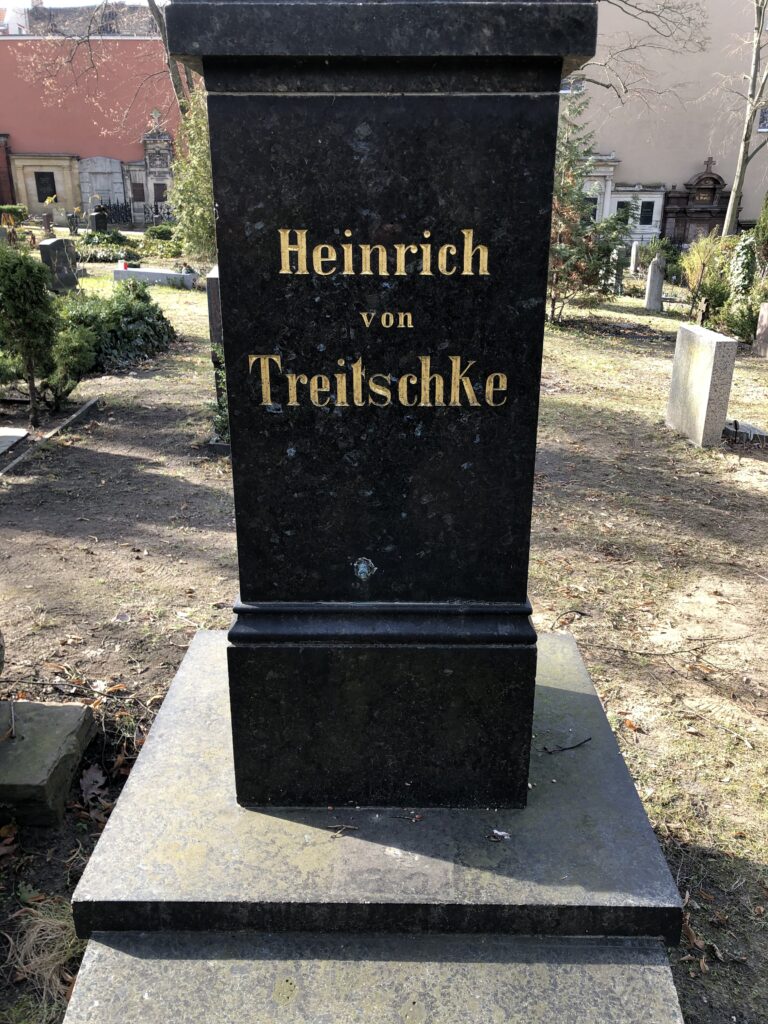
Anti-Semitism has a very long pedigree. Often, when one reads about gravestones being damaged in this context, it is Jewish headstones that have been targeted. This story is different.
The relationship with its Jewish community will forever be part of Berlin’s story. It is on the whole, a very ugly story, everywhere.
Today, Berlin’s monuments, exhibitions and study centres to this history are rather admirable. Here and there around the city are also reminders, tiny pin pricks of light in that deep, 12-year darkness as Hitler’s capital, that hint too at ‘what if?’ or ‘if only.’
The removal of reminders of uncomfortable history is an ongoing and contentious debate globally. Retrospective re-evaluations of the past often seem ignorant, lacking and lazy. The genuine relic, however uncomfortable the story it represents, cements authenticity and becomes a core around which discussion, fact and understanding can be built today.
Berlin has tussled with this debate, perhaps more intensely than other cities.
A Berlin metro station name came up for review recently. The station’s name – Möhrenstrs – or ‘Moor Street’ was the issue. No longer acceptable said some in today’s Berlin. This story has drifted from the front pages now, after a few new name proposals foundered. But if you missed the story here it is.
Berlin street names have been changed more often than most cities. Imperial period names morphed into Nazi. Then after World War II, both east and west Berlin relaunched with their own labels, and now there are some new modern ones too. It is a terrible irony that one of the longest lasting street names is Jüdenstrs, Jews Street, now both a testament and an accusation, and still signposted in the Berlin medieval period city centre area today.
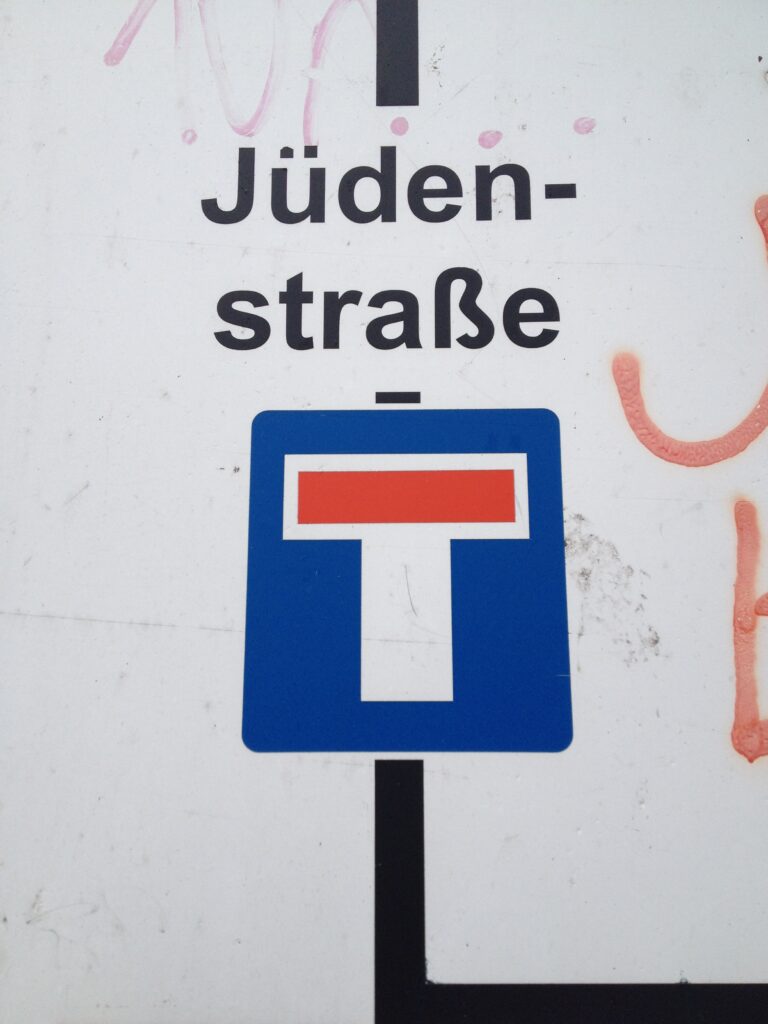
One street name controversy that has rumbled for years, and seems pretty simple to resolve but hasn’t been, is Heinrich von Treitschke Straße. My daughter’s school was on this road.
He was an individual with unpleasant ideas, who lived in a time when many already knew better. Treitschke was quoted by the Nazi regime – if fact his quote appeared as a slogan on a newspaper front page every week, then available in all good Nazi newsagents near you – from 1923 until February 1945.
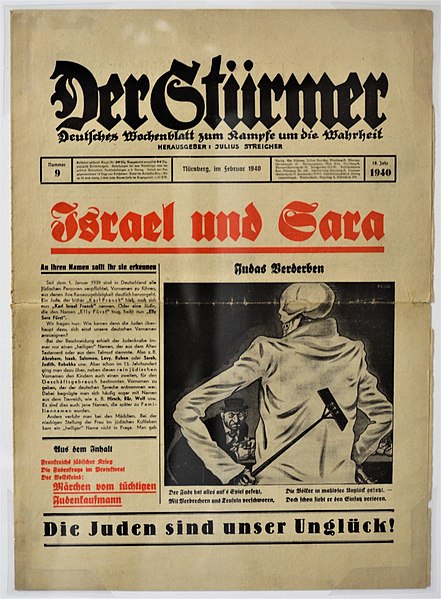
The name of the repulsive paper was the ‘Der Stürmer’, the content a slop of violent anti-Semitism and brutal adolescent pornography . The phrase was at the bottom of the front page was: ‘The Jews are our misfortune’
Violent antisemitism and brutal, emotionally adolescent violent pornographic fantasy sums up the Nietzschean ‘mass man’ that characterised many a the Nazi follower cum perpetrator. Godless, lawless, boorish, basic, childish, savage and completely unable to see their own degradation.
This should be born in mind when pondering today Hitler’s seemingly inexplicable appeal. The cheering masses in the beer halls, Hitler’s audience, where these folks.
Even the more erudite audience members experienced something peculiar. The German population, traumatised by the end of WWI and the myriad disasters of the 1920s, sought succour increasingly desperately, and in increasingly fringe places.
That is why Hitler was so effective. Millions of Germans abandoned the rational, the fair, and the logical and responded with a leap of faith to the emotional and self-interested, wallowing in dreams of revenge and the ecstatic vision of Hitler’s ‘quick fix’ redemption offer.
All you had to do was believe. Hitler’s speeches weren’t interesting, they were moving.
In this type of atmosphere emotive slogans and images wield power.
Hence the effectiveness of the phrase ‘the Jews are our misfortune’
Treitschke was a product of the main streams of German consciousness of the mid 1800s. As a member of parliament in the Reichstag he represented German nationalist parties and views. He was a contributor to a world into which Hitler was born. Treitschke is also quoted thus: ‘Brave peoples expand, inferior peoples perish’. This could easily have come from the Führer himself.
Where did these come from? Post French Revolution democratic fervour had spilled over into Germany by the mid 19thcentury. Industrialisation had produced a new, educated middle class that wanted representation. The workers and farmers too felt ripped off. The ruling aristocratic castes were afraid.
This catalysed debates about a new German democracy, nationalism, and imperial ambitions, often underpinned by crude notions of social Darwinism. Unfortunately, at this time, German Jewish emancipation was up for debate (again). There was also the sudden realisation that modern industrial economies and stock markets could fail. It was a new world in which some German Jews, brave and innovative, excelled. It’s failures demanded scapegoats.
These sentiments, combined eventually with broad feelings of national self-pity, jealousy (v. Treitschke was vocally anti British empire) and stupidity, contributed to the slide into World War I.
v. Treitschke died in 1896, not seeing that that he had in part inspired (the question of whether he would have been moved by Hitler’s speeches is moot as he was deaf).
He was buried in the St Matthews cemetery in Berlin, a resting place of more illustrious dead, perhaps these men are the most significant. Treitschke was a well-known figure, and his grave is substantial, made up of a costly, black-green granite head stone and flat grave-cover slab.
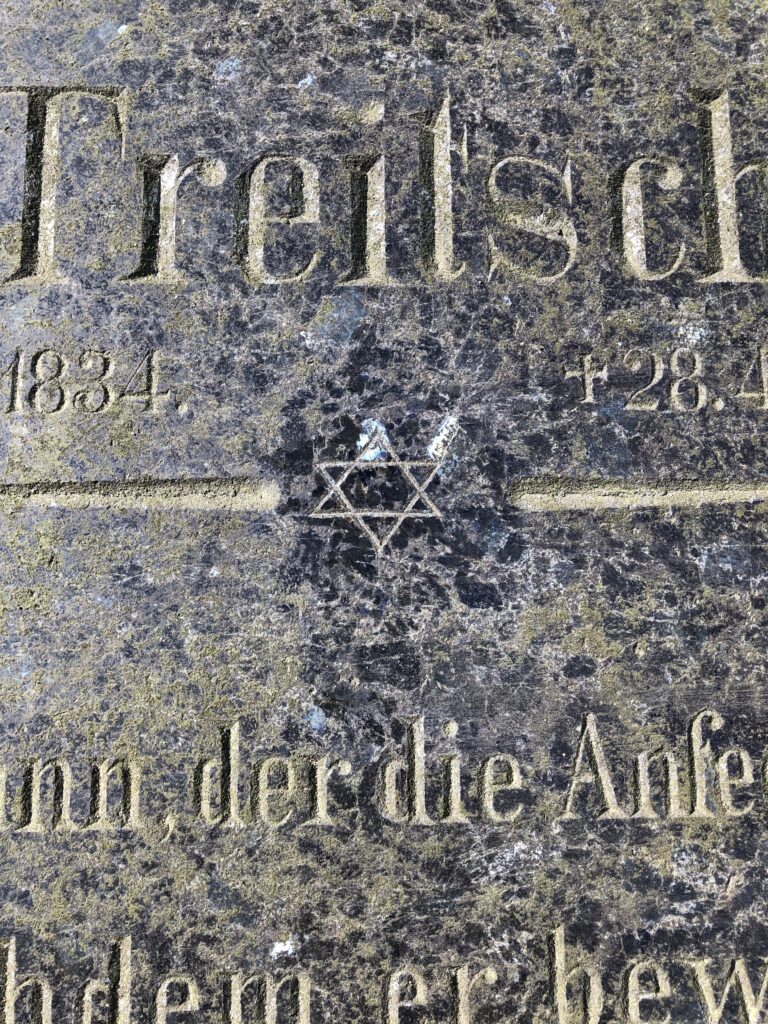
But today, if you look closely at this grave, you see now see something peculiar.
On the flat gravestone, under his name and dates, there are two carved scrolls. These remains untouched, and might have originally flanked a central symbol, perhaps an Iron Cross.
But at some point, probably in the 1980s, this part of the slab was ground down by persons unknown, mechanically, leaving the central section smooth and shiny. And then, with power tools, a neat star of David has been cut into the space. It’s deep and carefully executed. Only the left-hand angles seem a bit ‘off’. This hints that this person was perhaps not a professional, was determined (it’s cut into granite) and perhaps was working hurriedly as one would expect if one had lugged power tools, and a power source into a cemetery to amend a grave.
Who did this is remains a mystery. Why is pretty obvious. It looks like the ‘amendment’ will stay there as long as the grave. A strange victory.
The women who blew up Berlin.
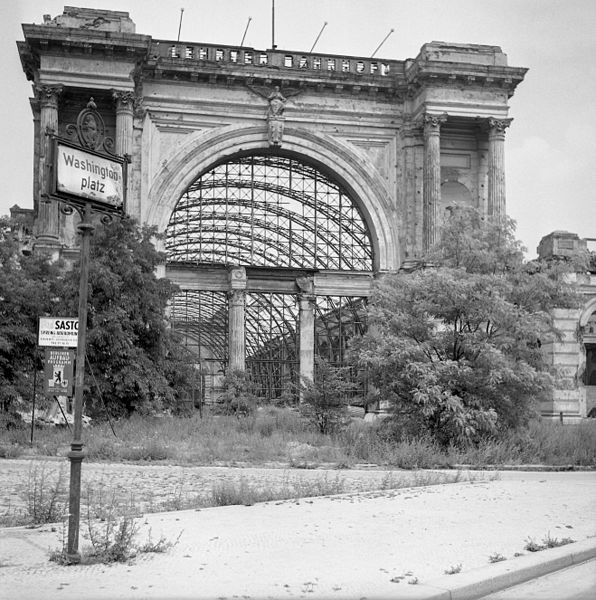
Walk down any Berlin main street and you will be struck by its discordant architecture.
Today’s new 21st century glass and steel cages, still retaining the same mass as the rare surrounding surviving pre-war blocks, now fill the old vacant spaces left by WWII and the rare stone, bullet scarred facades of pre-1945 Berlin.
In between comes the bulk of ’50s and ’60s concrete boxes, the face of the Berlin’s great (and still ongoing) post-war relaunch. These were erected fast and cheaply, once the bombing rubble had been cleared away, to house tomorrows world. Symbolically, this fresh, modern style was chosen to represent a future in what was then the most important city in Europe.
These post-war buildings would become the faces of two choices of future, one in east Berlin and one in the west – a future under either communism or democracy.
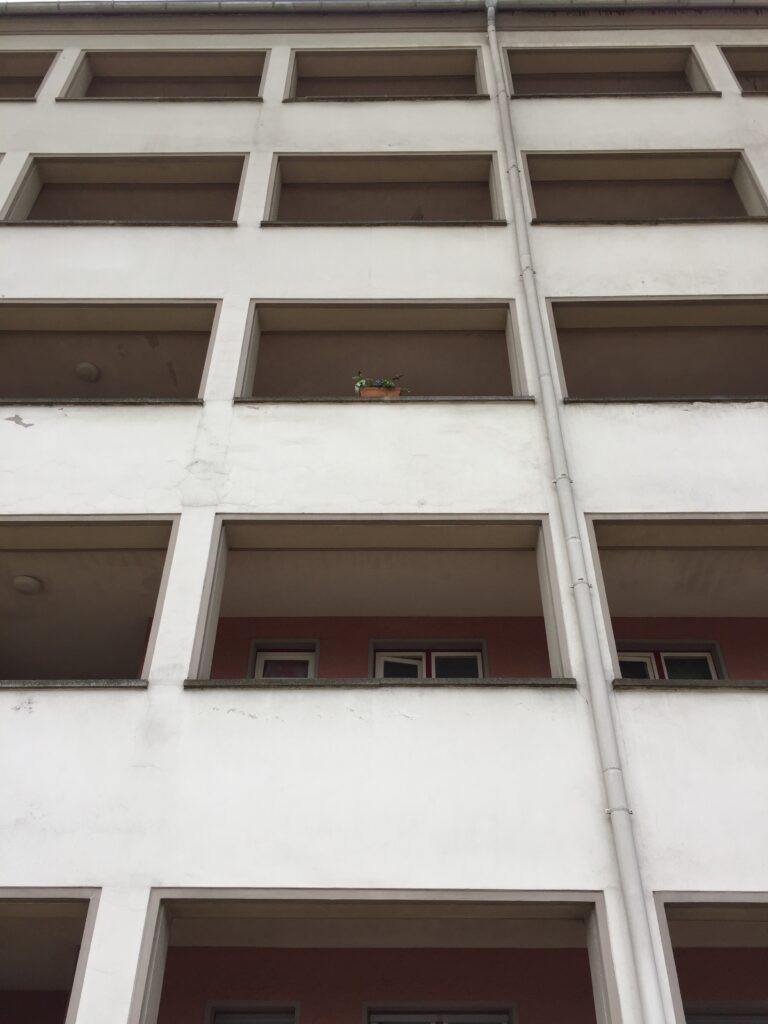
Students of architecture would have sensed a continuity in this post-war city-wide style. It retained elements of the earlier architectural projects that fell under the broad label ‘Modernism’.
This early 20th century architecture was characterised by a shedding of historic styles, as a rapidly changing 19th century Germany industrialised, mechanised, urbanised and democratised. This new world demanded a New Berlin. Old Germany disintegrated, perishing as horse drawn Imperial carriages were replaced by electric mass public transport vehicles processing through Potsdamer Platz and the Brandenburg Gate. This transition was so profound its fall-out dictated world history for the following century.
After WWII, the famed ‘Rubble Women’ cleared broken Berlin by hand, creating the ‘rubble mountains’ on both sides of the city. But one women was a different type of rubble women. She didn’t remove it. She created it. Her name was Hertha Bahr. And she blew up bits of Berlin.
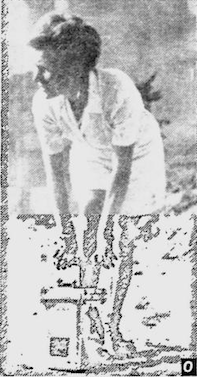
There are very few images of Frau Bahr. She appears in broadcast of TV news in mid-July 1957. Berlin was still in ruins, and there amongst them is Hertha, surrounded by gangs of grinning men overalls. She is definately in charge. And she is laying charges as the footage cuts to here inserting dynamite into bore holes. Minutes later, the vast, ruined temple of industry, Lehrter Bahnhof (now Berlin Main Station), crashes to the ground.
Hertha Bahr was Germany’s first female demolition expert. Her company base was a renovated villa in the wealthy Grunewald district. Here she organised her operations. In the late 1940’s an eye witness account mentions her company involved in the demolition of buildings surrounding the famous Baroque Gendarmenmarkt Square in central Berlin.
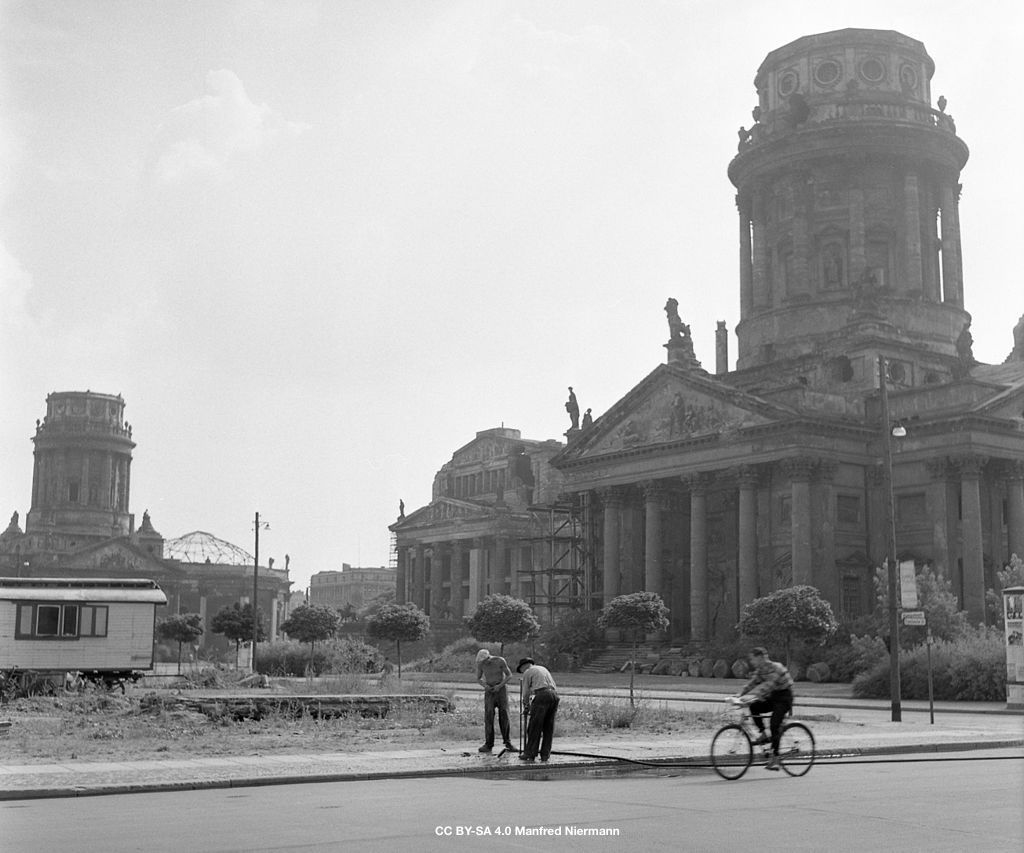
All reports on Behr’s activities (admittedly a novelty), often seem obsessed with her appearance. This time it’s noted, she was sporting a ‘green silk blouse and red nail polish’. While she was at work here, folks were squatting in the rubble and cellars and refused to leave. One was nearly crushed by a falling wall.
Bahr’s first major commission was to destroy the building at the very heart of Hitler’s Berlin – the New Reich Chancellery from 1939. This project was a central part of the ‘denazifaction’ policy introduced by the victors in the late 1940s. Part of this ‘deprogramming’ was to remove Nazi period buildings to avoid them, in defeat, becoming places of sentimental memory of the Nazi regime. This was deemed necessary, its reported that tearful crowds gathered and sung outside the Chacellery in the immediate post war years. Even the wall plaster of Hitler’s mountain house was removed by locals as ‘the Führers breath had condensed in it’).
Though Hitler spent more time making key decisions and directing WWII from 2 other places than the Berlin Reich Chancellery (these were the ‘Wolfs Lair’ in Eastern Poland today and his ‘home’ – the Berghof – in Berchtesgaden – roughly 1000 days spent in each place) this building symbolised the core of his regime in the Nazi capital. Here was his office, and in the garden of the building his body would burn in 1945.
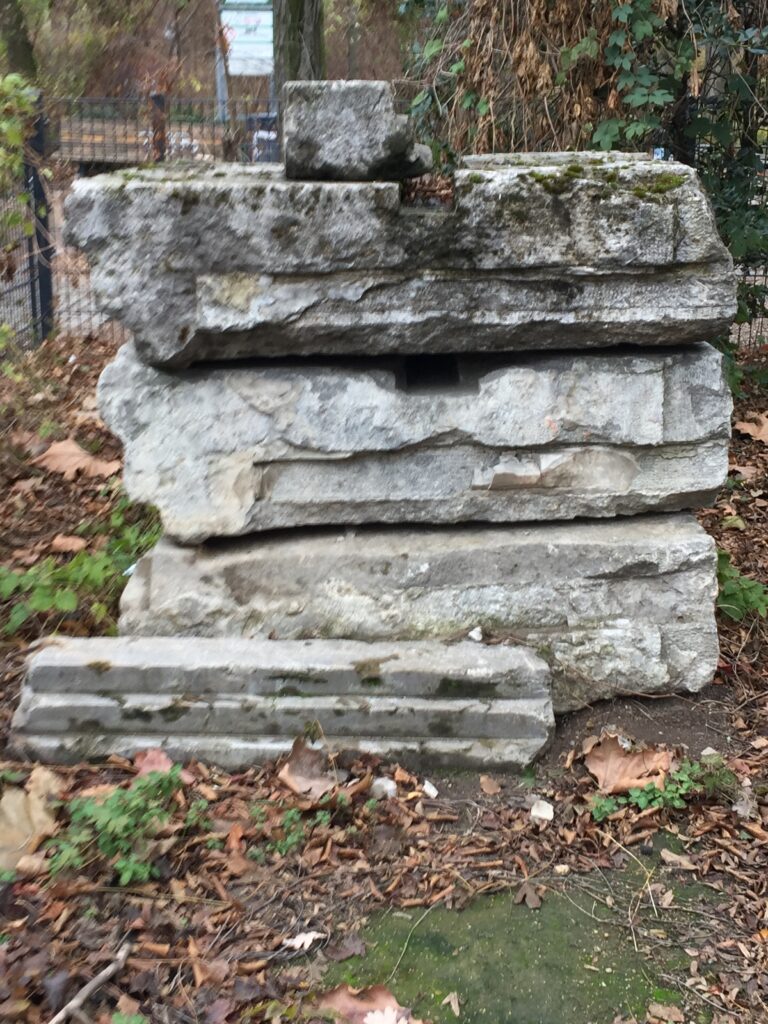
History does not record what she was wearing during this operation, (but it seems to have been a dark, roughish coat and black skirt).
In the late 1950s she destroyed Lehrter Station, and in the summer of 1960 the remains of Anhalter Station, leaving the entrance façade as a reminder of the ruins of war, perhaps a response to growing resistance amongst west Berliners that reminders of old west Berlin were practically all gone.
She was still working in west Berlin the 1970s, removing the ruins of domestic buildings for redevelopment, appearing in action depressing the plunger of a detonator in an article in the Carlisle Citizen newspaper based in Iowa. A white summer dress was apparently the choice here.
They quote her: ‘Blowing up a building is a safe as crossing the road, as long as you know what you are doing’.
